You must be logged in to rate content!
16 minute(s) of a 484 minute read
9-23-2017
VSCC Mid-week Wimmera Wander
All those with even limited knowledge of the Geography of the World will agree that Australia is quite a large country. Those with an even more detailed understanding of the place will agree that whilst the smallest mainland state, Victoria is still large enough to comfortably swallow up the whole of England with some room to spare. Having established that; we can continue with our description of of our four days motoring in just a comparatively small corner of our home state. This is loosely described as “The Wimmera”. Located in the lower part of Western half of Victoria the Wimmera is that fertile part of the State largely given over to sheep and beef cattle grazing along with broad acre cropping. As we were to discover it also enjoys more rainfall than the dryer northern corner of the state known as the Mallee. Indeed for much of the first two days we drove through driving rain accompanied by gale force winds. After all in out part of the world it is Spring and this is what we have come to expect. Not that we were put-off or even considered it worth-while stopping to erect the Rapiers hood. Perhaps it is here that I should further explain that we were driving, has become our custom in our 1934 Lagonda Rapier the smallest car in a field dominated by Vauxhall 30.98s, Talbots and Alvii. Perhaps by engine size alone we were on a par with a couple of “Modern”Lancia Fulvia fixed head coupes.
The driving part of the event consisted of the first two days “Out & Back” tours starting and finishing at the prosperous regional centre of Hamilton. To reach Hamilton were drove in a north-western direction to Ballarat where we stopped for a light lunch before following the Glenelg Highway in a generally westerly direction to our overnight stopping place. Google maps tells me that the distance is about 325kms, just over 200 miles and allowing for a lunch stop would have taken about four and a half hours at an average speed of a bit over 50mph. Not too bad considering the combined average age of car and crew is near enough to 80 years.
The first day of the actual event took us out over a pleasant “wander”travelling on good sealed secondary roads first through Merino, then Casterton, famous as the “Birthplace of the Kelpie’ and on to our lunch stop at the historic little town of Harrow, said to have been one of the earliest established towns in Victoria. Lunch was a stand up buffet in the Community Hall, very welcome cups of hot soup, sandwiches and cakes washed down with copious cups of tea. The mornings drive amounted to just a fraction under 100 miles.
Refreshed we set out on the return journey through lush green grazing land to first Balmoral and then Coleraine. We took a short detour to look at the water pouring over the Wannon Falls in a most spectacular fashion then crossing to the other side of the highway to the even more impressive Nigreta Falls then on back to Hamilton to take our total for the day to almost 200 miles travelled.
For our third day on the road, Officially Day Two of the Rally we loaded all our belongings into the rear of the Rapier and set off for the mornings drive to Natimuk following the A200 to Cavendish where we turned off along the C188 towards Balmoral. From there we took the C214 through Kanagulk, Toolondo, Jallumba to Noradjuha then on the C219 to Natimuk. It may seem confusing but these roads are mainly single lane sealed (bitumen) roads and the place names are just that, a spot on the map where you may see in the distance a lonely farm house. We stopped for a Lunch at Natinuk, again in the Community Hall, cups of soup together with plates of sandwiches and a variety of home made cakes, some 75 miles from Hamilton where we had started that morning is more of a Village than a Town although it does boast having a Police Station.
Lunch over we were off again returning to Noradjuha from there we followed the C214 for just one mile then turned onto the only section of gravel road for the whole journey and after only 3 and a bit miles joined the Henty Highway. Our instructions informed us that we could recognise this as It had a “white line” painted along its centre but not for long! The next turn took us onto the Wonwondah-Laharum Road followed by another turn on to the C222, the Northern Grampians Road. At Laharum the C222 was signposted to Halls Gap via Wartook and Zumsteins. Here we were cautioned that the route was unsuitable for cars towing caravans as it twisted and turned along a winding road, not a problem for the Rapier although it was along here that after one or two too many pot-holes the exhaust silencer decided to part company with engine pipe. Having straightened out one or two of the flexible supports and suitably put it back in its place with a few sharp blows with the wheel hammer we could continue on to the finish at Hall’s Gap. We had to also make an adjustment to the charging circuit after some miles with the amp meter failing to register either a charge or a discharge. Following this we continued with the side and tail lamps turned on to avoid over charging the battery. The afternoon’s motoring added another 60+ miles to the total.
After drinks our motel room with a few friends and a pleasant evening meal we both slept like babies.
Next morning after a leisurely breakfast we started out for the long drive home, taking the scenic route through Pomonal and Moyston to Ararat before joining the main interstate Western Highway which took us first to Ballarat where we had a relaxed lunch in a restaurant in the “gardens” over looking Lake Wendoree. Restored we set out on the final leg for home enjoying the multi-lane highway. We made one final stop to replenish the petrol ensuring that we would make the rest of the journey home uninterrupted. That is until we changed onto the Ring Road along with all the late afternoon - evening peak traffic. For the first time in the entire trip the water temperature gauge climbed up to 90 degrees. Fortunately the electric radiator fan turns itself on making sure that the temperature always stays well short of “boiling”. By the time we reached home this had returned to normal.
The odometer (miles) showed that we had added another 1,600+ to the total in the four days we were away. Next morning I could add no more than half a pint of water to the Radiator and slightly less than 1 litre of oil to the sump. While not exactly concours, all that should be necessary is a quick sponge over with some warm water, a wipe dry with the chamois and a quick brush over the carpet, to restore the car back to its usual tidy self. The wind and the rain that plagued the first couple of days is soon forgotten and we will no doubt be lining up for the next VSCC event.
People unused to looking at maps of Australia. Where there are no roads or places shown, this is because there is nothing there!
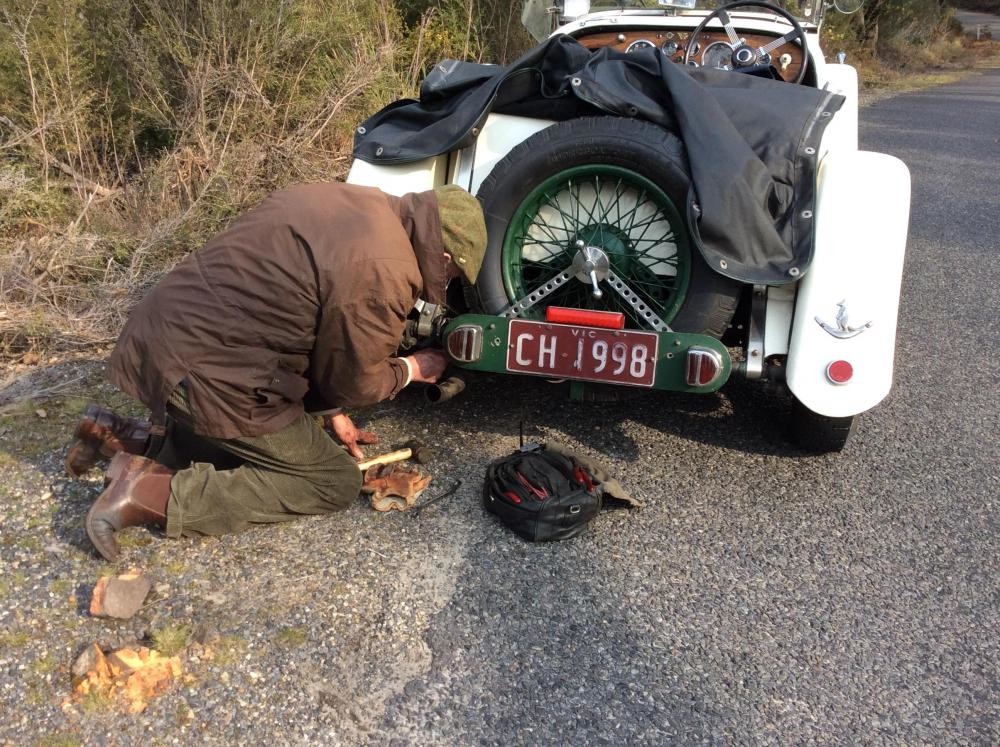
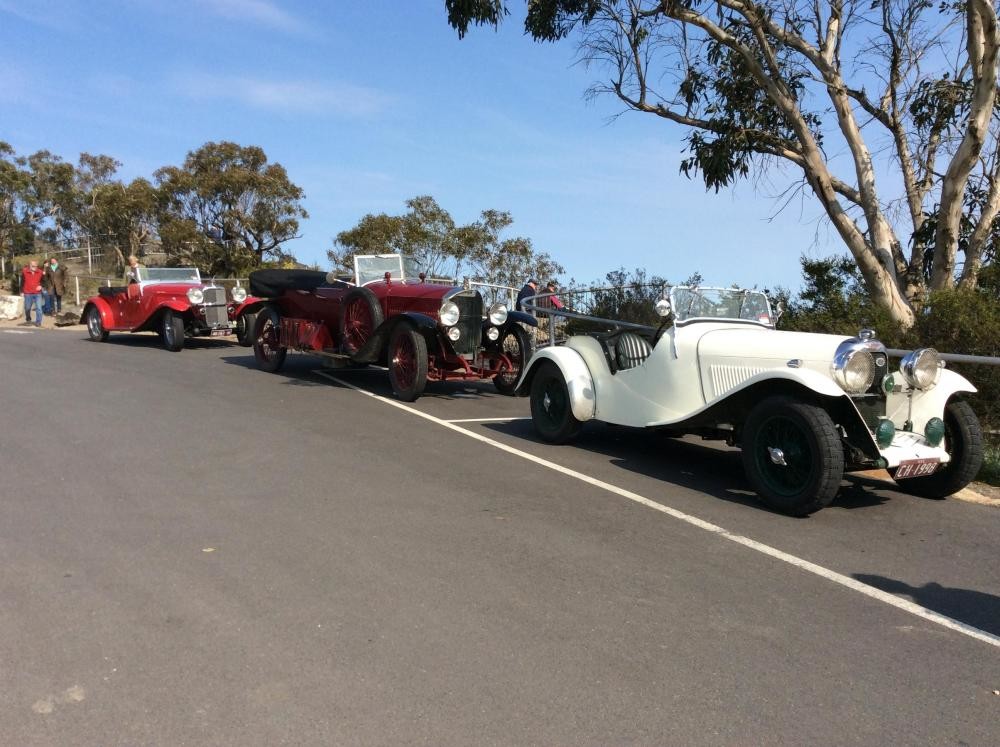
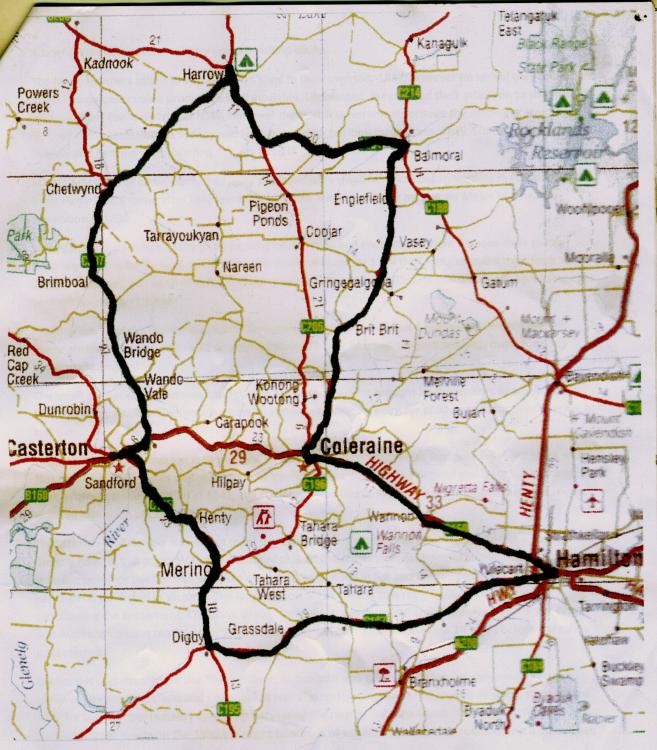

The completely unpronounceable place names are generally taken from the Australia's first inhabitants, Aboriginal language. Most other Place names are taken from the English early settlers.
The Grampians is a remarkable massive outcrop of ancient stone.
Where I refer to the Rapiers Hood this is the Top or folding canvas roof, not the Bonnet which is the cover over the motor.
I tend to forget that not everyone knows about Australia's most famous Canine product. The Kelpie Sheep Dog that has a natural instinct to herd almost anything that moves. Every year Casterton holds a Kelpie Festival with dogs comming from every corner of the country plus a few from overseas to compete in "Sheep Dog Trials" Herding a small flock of sheep (about a dozen) through a series of hazzards, the owner controls the dogs actions by voice or whistles. The dog that herds the sheep through the hazzards and into a pen in the shortest time wins. The dog must do all this without barking but controls the sheep by "eye".
At one end of the main street is a very steep grassy hill where the same dogs undergo a Hill-climbing trial. The dog is held by a netural "handler" The owner stands at the top of the hill and can whistle the dog once. On this signal the handler releases the dog. The dog that reaches its owner in the shortest time is the winner. One of my sons has a pet Kelpie dog that is now quite old. It has never had any training but it will herd "Free-range Chickens" up, down and around his garden. She never touches a chicken and never barks at them but can control them and keep them in a tight bunch without any human assistance, purely by instinct.
I am sure that Google could tell you even more about their capabilities & prowess. Try looking at http://www.castertonkelpieassociation.com.au
Woof woof!
Further to your question about staying dry. At 50-60 mph the rain goes over the windscreen and over your head, however as I tell people "You dress appropriately" When you finish looking up Kelpies try looking at "Dry-as-a-bone" and "R M Williams boots".
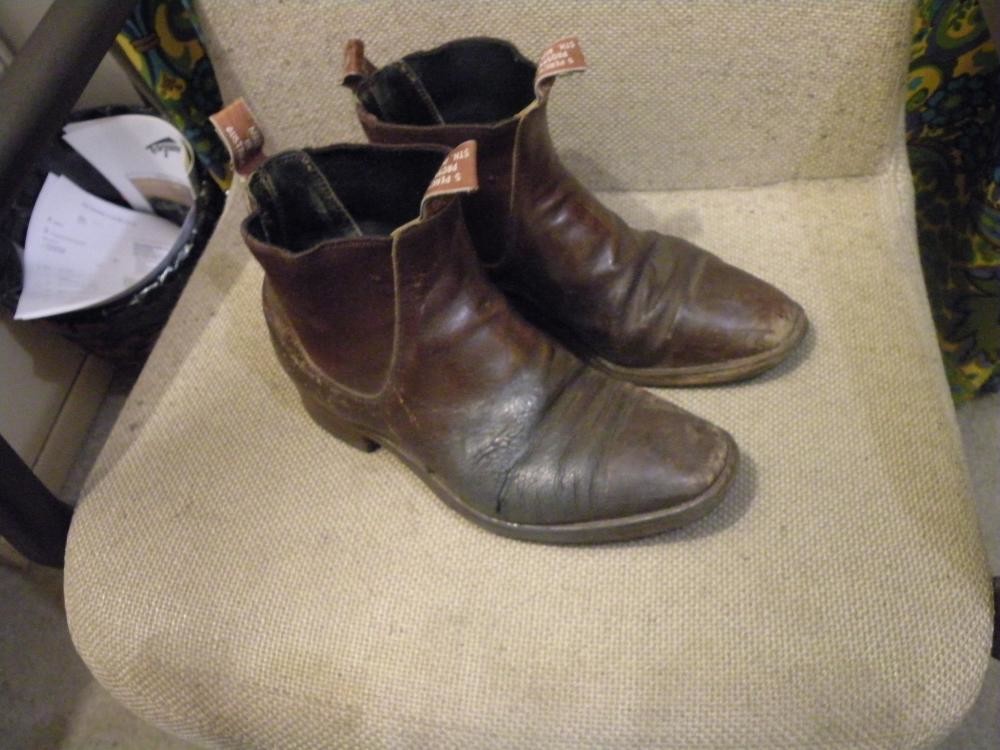
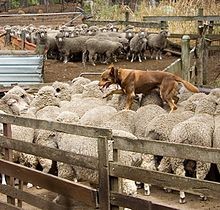
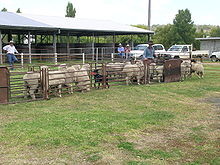
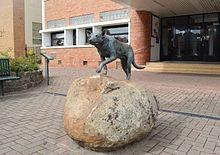

I have been reminded that I have not really told you very much about the country and some of its history. Following the discovery of Gold in Australia in 1851
Australia was to enjoy its Gold Rush and subsequent period of prosperity. Much of Victoria's wealth came from both allluvial gold recovered from the banks of rivers and creeks and from deep mining. At the time much of the country we were touring through had been the site for both slucing or "panning" for alluvial gold and deep mining. Both Ballarat and Ararat were centres based on the wealth amassed from gold. Both towns have Large and Imposing Civil Buildings as well as some magnificent palatial domestic housing.
Much of the Victorian country side was natural Eucalypt forest but with both the need for housing for the suddenly increased population ( Mainly timber structures) and the demand for timber posts used to shore up the underground mines, much of these natural forest was cleared. This is now the open grazing land we were driving through. There are still remnants of forest and many of the roads are bordered with imposing stands of mature Eucalypt trees. In more recent years as a result of proposed taxation benefits to be had from "Carbon Abatement Schemes" These encouraged the planting of vast plantations of fast growing Eucalyptus Trees These are of course very different to the natural forest. As the trees nature they are "Clear felled" meaning whole plantations are cut down and the resulting logs are carted away to be milled or to be unfortunately more often chipped. The vast majority of the resulting wood chips are exported to Japan in bulk carriers (ships) While the roads are more or less deserted there is just one hazard to be considered, large "B-Double" articulated trucks.
Many of our country roads were first surveyed in expectation of a very different form of traffic, these are described as "Three Chain Roads". The distance between the two boundaries being the old surveyers measurement, each chain is equivelinent to just over 20 metres so the road "reserve" is over 60 metres widewhile the actual road may be just eight or 10 metres wide. The requirement for these wide roads was to facilitate the movement of sheep and cattle on foot. These roadswere also referred to as "Stock Routes" These days, during draught in particular, farmers often turn their stock out intothe "Long Paddock" so that their stock can gaze on the grass growing on the roadsides. Naturally the sheep and cattle need to be kept from straying although today you more often see the farmer mounted on a "quad-bike" than a horse. It is not unusual to see signs by the road side warning "Caution Stock Ahead; Please drive carefully!".....
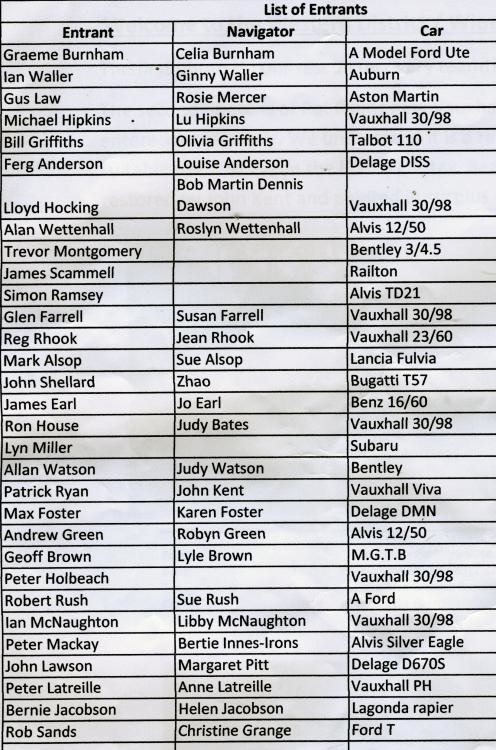
The three photographs below show 1. a general view across theWimmera from a lookout in the Grampians
2. The Wannon Falls and 3. The Nigreta Falls. Both water falls are on the Wannon River just a few miles out of Hamilton,
See:- Map 2 #376 (above).
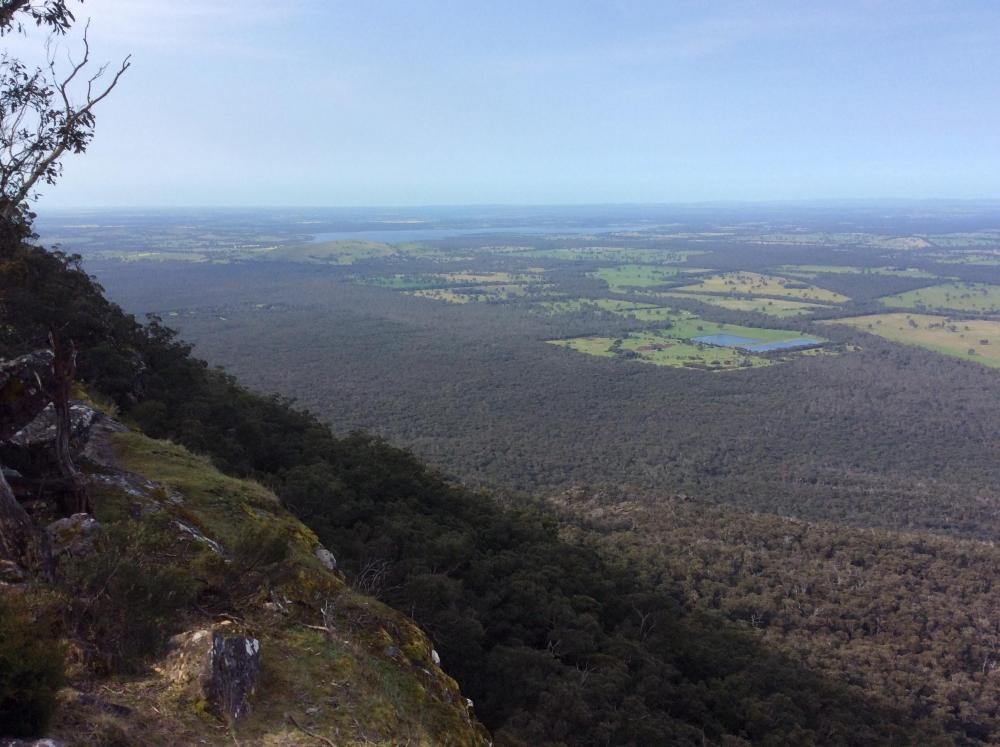
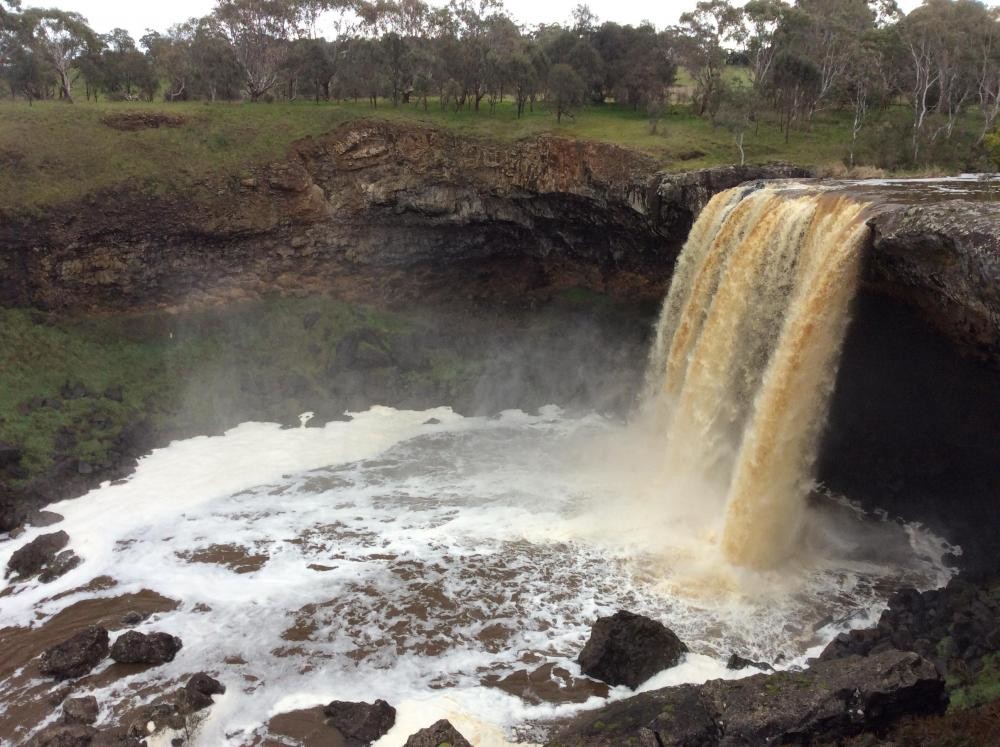
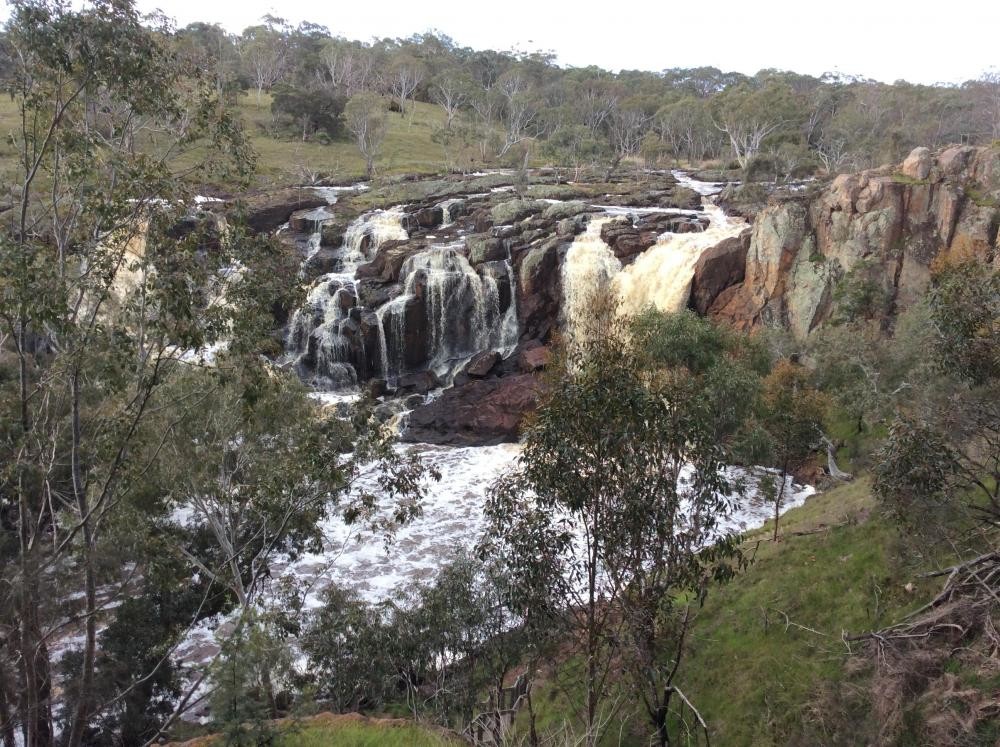
10-10-2017
Towards the end of our drive around south western Victoria the Rapier decided that it did not want to idle nicely (at 800 rpm). After diagnosing the fault as an air leak on the induction side, I have this morning removed the inlet manifolds and carburettors and discovered a small air leak due to minor damage to a gasket. I am now in the process of cutting new gaskets and hope to put it all back together again tomorrow. Leaning off the mixture is not a good idea. It serves me right for re-using a gasket last time I had the engine apart. Usually I will not use "silicone" gasket "goo". so I deserve a smack for trying to take a short cut.
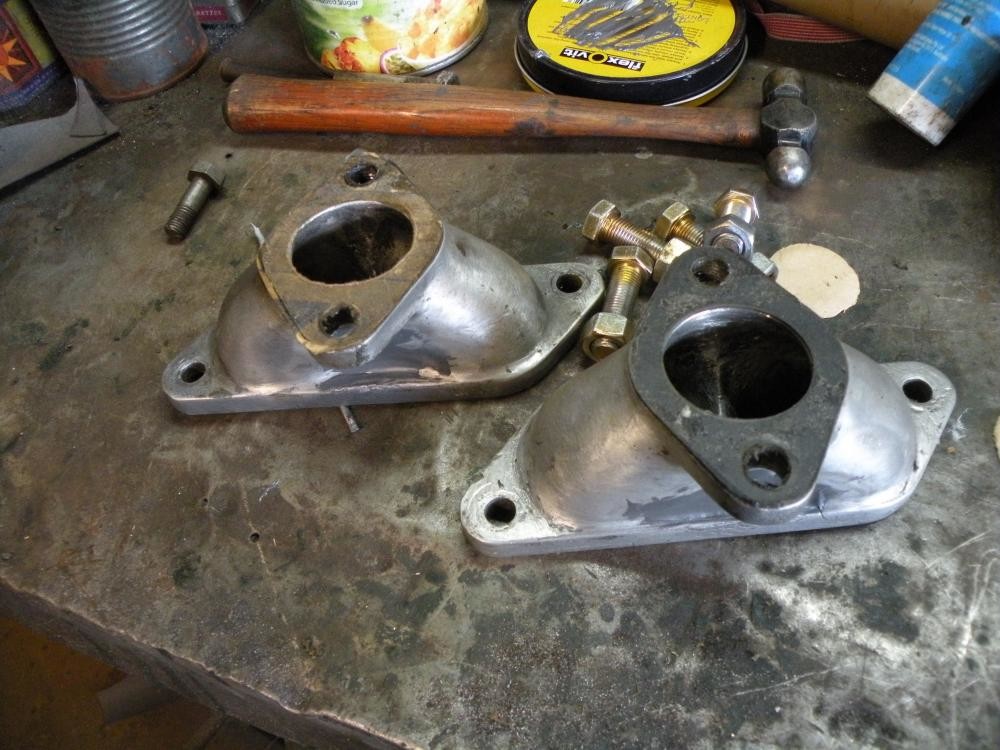
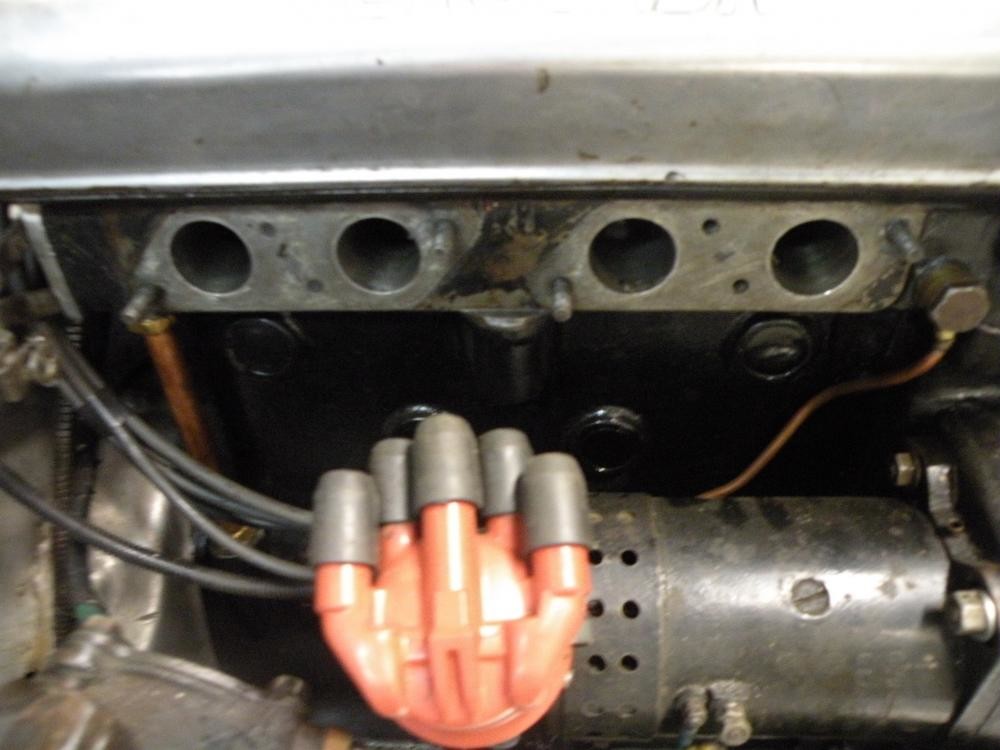
For the observant people looking at the photo (above) of the inlet side of the cylinder head/motor. The Generator is gear driven from the side of the timing gears, the distributor is driven by a pair of skew gears behind the generator. Oil is taken to the valve gear and the cam bearings at full pressure thorough the 5/16 copper pipe to the front of the head and drains back into the sump through the larger copper pipe, one on each side of the head. The four inlet ports have been gas-flowed and polished. Carburettors are a pair of 1 1/2 inch SUs.
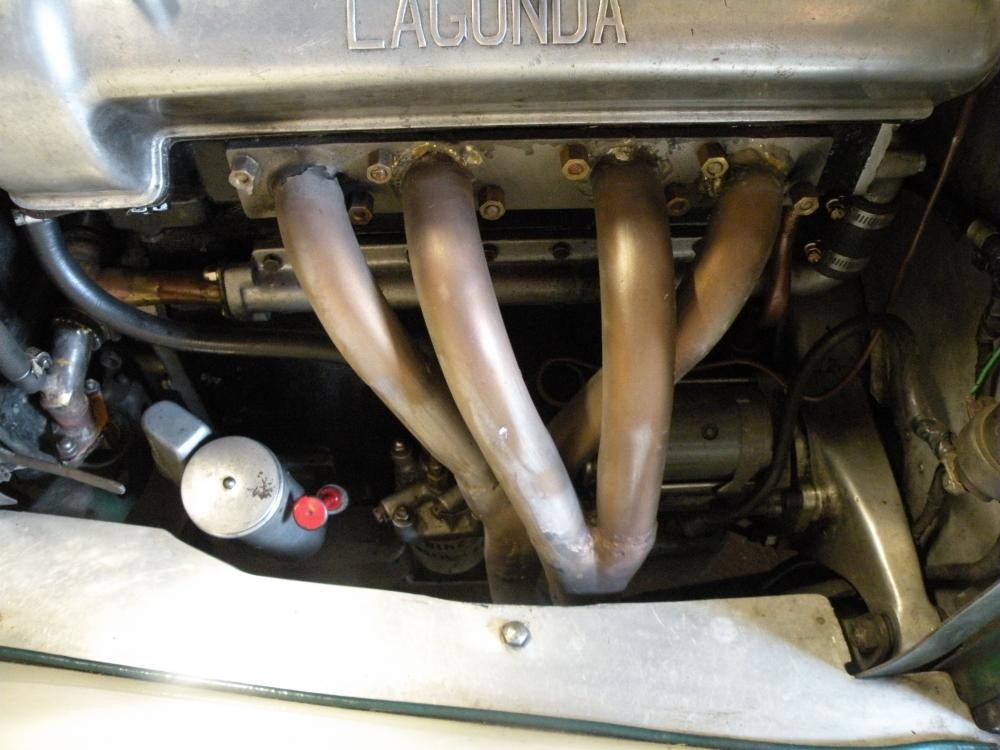
The exhaust side of the engine is well looked after by a matched length 4 into 2 into 1 extractor set-up. A "Geared" starter motor and full flow (canister) oil filter are tucked in under the exhaust system The "red knob" is the oil level dip-stick with the oil-filler next to it. The finned sump holds two gallons of oil under a "windage" tray. The high pressure hydraulic (black) hose" delivers oil to the full flow oil filter from a "Mini-Cooper" Concentric oil pump driven from the front of the timing gears. Water pump is also gear driven. If you have not already worked it out, there are no belt driven accessories, the cooling fan is a thermostatic controlled electric unit set to switch on at 90 degrees centigrade. Cooling water is fed along the aluminium gallery on the side of the block and into the rear of the head on the exhaust side to return to the radiator from the front of the head. Water is also bled off into the cylinder block to flow around the top of the cylinder barrels where it is most needed.
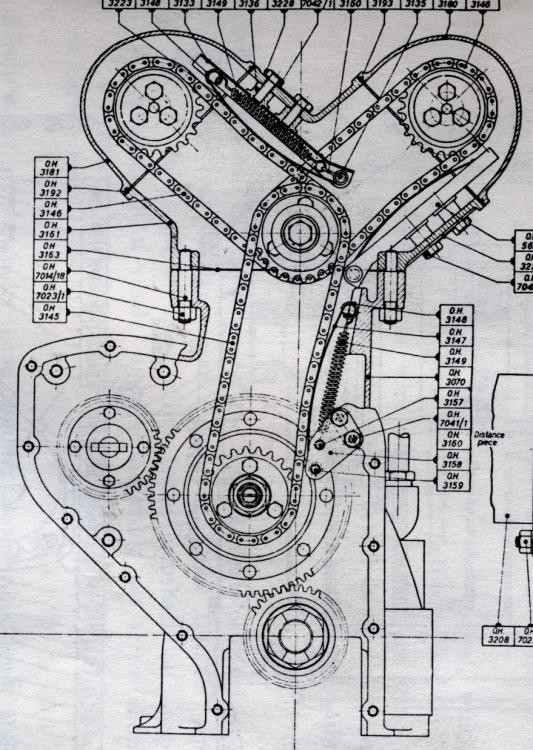
Further to the above, the generator & distributor are driven from the rear and waterpump is driven at engine speed from front of the gear to the side of the main (half time) gear while the oil pump is driven at half engine speed from the front of the "triple sprocket" at the front of the cylinder head.
I hope that this is of some help. Being a four cylinder engine the timing gears are 2:1.. There are three chains one from the front of the "half-time" gear goes to a triple sprocket at the front of the cylinder head with two seperate chains going one to each camshaft. The three chains are all kept in tension by "Weller (spring) blade tensioners. The engine will "rev" happily to 6,000 rpm.
Great detail!
Posted by Diggymart on 6/20/19 @ 2:41:04 PM